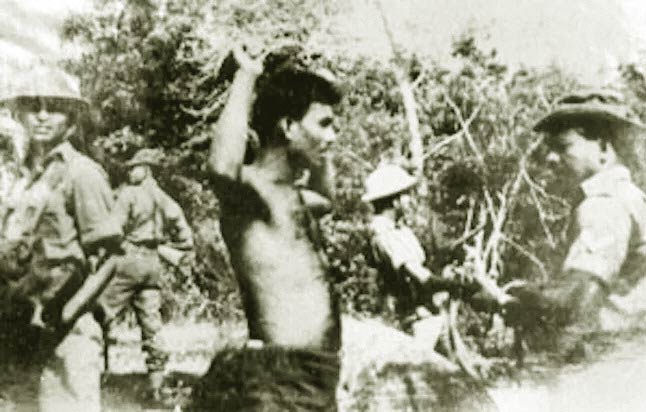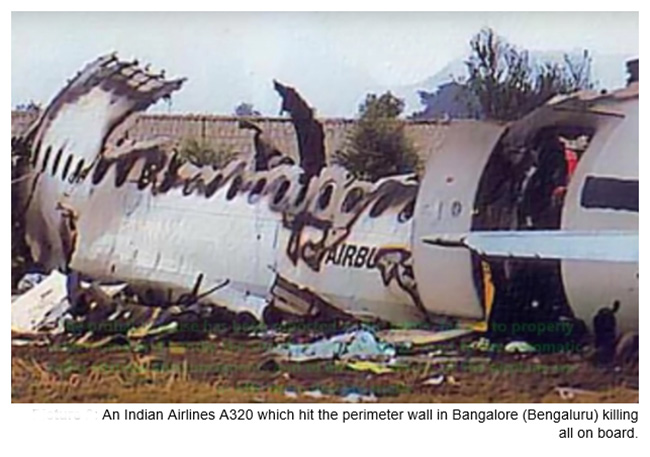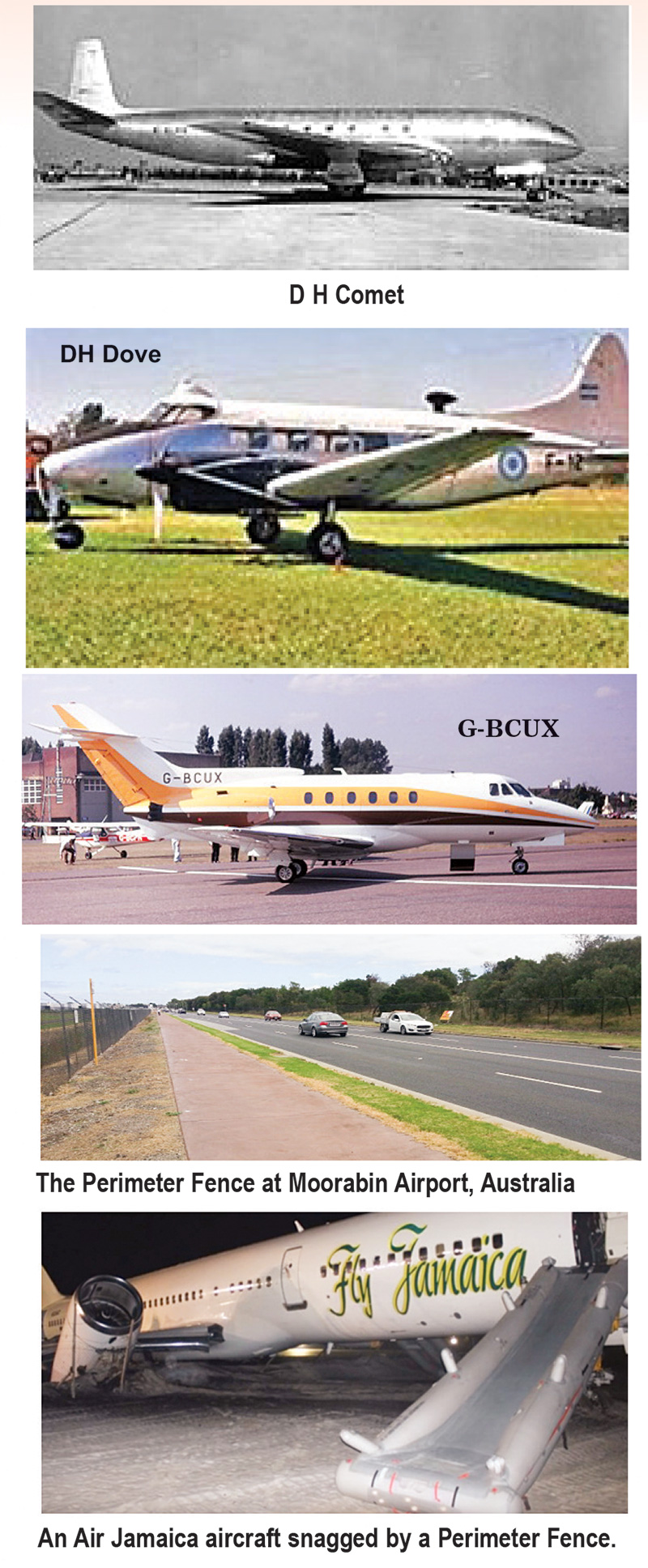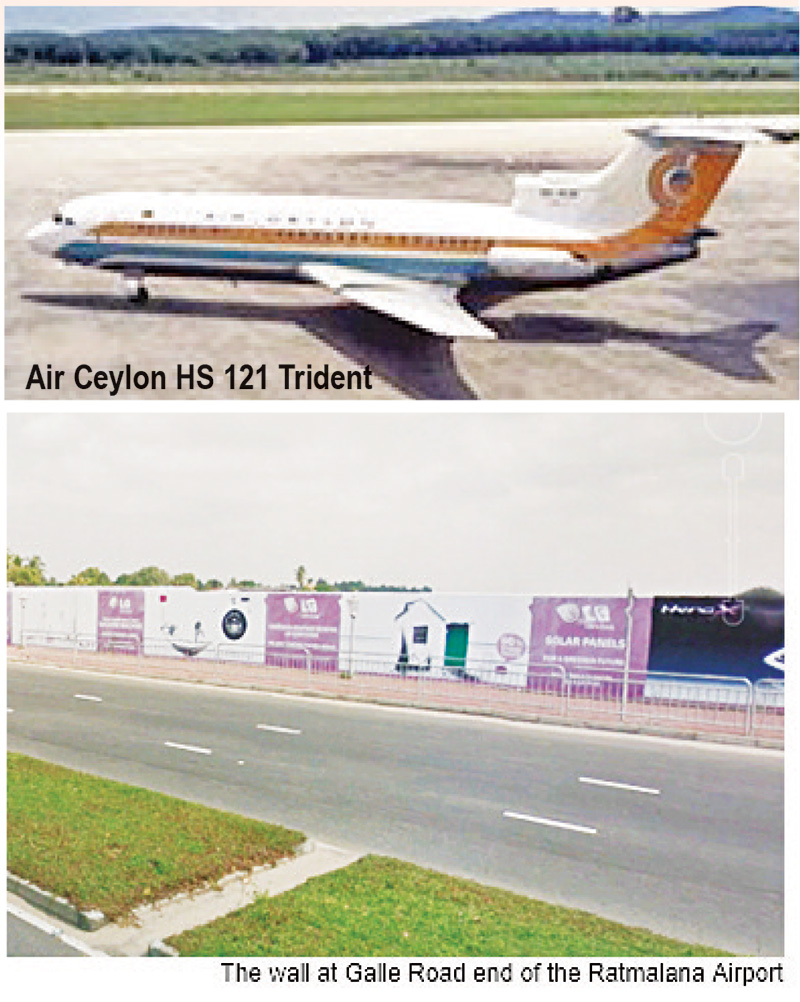Features
Learning from the Insurgency 1971 and how it began
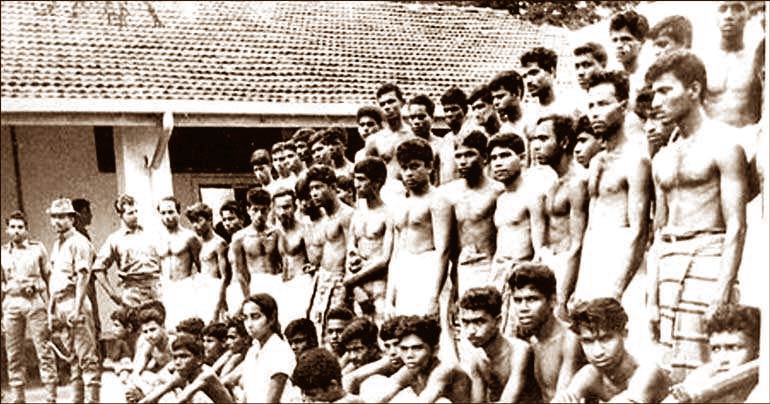
LESSONS FROM MY CAREER; SYNTHESISING MANAGEMENT THEORY WITH PRACTICE – PART 3
by Sunil G Wijesinha
I was now the unofficial Officer-in-Charge of the Boat Project at Peliyagoda of the State Engineering Corporation (SEC). How I got there is another story and will be told later. The insurgency attack was launched on April 5, 1971. For months before that, we all knew it was on its way. There were reports of accidental explosions of bombs and similar incidents, all leading to an impending armed revolt. I recall an incident where one of our batch mates invited me for tea in the Head Office canteen and, in a secluded area, explained about the injustice people go through and how a revolution is the only solution.
He was obviously trying to convert me. It was a one-and-a-half-hour lecture, but he failed to answer my questions and could not respond to my challenges. I felt he had attended the infamous training camps and had been thoroughly brainwashed. On April 5, Radio Ceylon announced that some police stations had been attacked. On the 6th, on my way by bus to Peliyagoda, several army trucks were travelling with soldiers carrying rifles pointed outwards, ready to shoot. After I arrived at the boatyard, I found there was no electrical power, which was probably the work of the insurgents.
We began getting news from many State Engineering Corporation (SEC) staff members fleeing their workplaces. Many of those were from the Salawa site, where the biggest plywood factory in Asia was being built by the SEC. The Salawa site was a hotbed of the insurgents. There were stories of people beheaded and hung that day, but these were not verified. My batchmate who tried to convert me was stationed in Salawa. The insurgency had started and my batchmate was arrested. Fortunately for him, another batchmate having close links to the then IGP went from station to station with the help of the police and finally traced him. His life was saved. He was lucky, unlike many others who were arrested.
Escaping to our village home and getting my job back
Events during the following days were frightening. We had a 24-hour curfew, and there were rumours that the insurgents would disrupt electricity and water. There was no way we could survive in Colombo without electricity and water. My father decided to close up our Colombo house and leave for our ancestral home in the village as a temporary measure. At least we would have well water and our generator there.
Although it was in the deep south, our village was still peaceful. We arrived at Getamanna, and the following day, it was a 24-hour curfew for the Hambantota District. A few days later, when the situation was brought under control, the Government announced that all Government and Corporation employees should report to their workplaces immediately, and if not, they would be considered as having vacated post.
There was no way I could have travelled back to Colombo. Being 22 years old at the time, I ran the risk of being either forcibly recruited by the JVP (new insurgents as they were called) or arrested on suspicion by the Police or the Army. My mother said it was alright even if I lost my job. There was no telephone to contact the SEC. Finally, when things had settled down, we returned to Colombo.
I had to first go to Head Office and give a letter of explanation as to why I did not report before the deadline. In the meantime, I learnt that the Chief Engineer (R&D), Dr Sivaprakasapillai, had written to the Personnel Department that that he would guarantee I was not an insurgent and should not be treated as having vacated post. I was very grateful for the confidence he placed in me.
Floating Bodies on the Kelani
On arrival at my site at Peliyagoda, which was almost next to the Kelani River, we could hardly work because dead bodies were floating in the river from time to time. All my workers would run to the river to witness the scene. There was no way of stopping them. The sand dredger of the SEC was set up to pump sand from the river through a large pipeline to the then North-South highway project. The dead bodies would get entangled in the pipeline, and volunteers with hooks fixed to poles would lift the bodies over the pipeline so that they could peacefully float to the sea. Whenever a body was sighted and such was around five a day, traffic on the Negombo road came to a standstill. The horrible sight was a great attraction to many.
The Less Committed Revolutionaries
A colleague of mine at SEC who had many friends at the Ceylon College of Technology, Katubedda (now the University of Moratuwa), knew of the impending the attack. He was following a course to become a mechanical engineer. The insurgents had promised that he would have a role as an earth-moving operator because when they came to power, many development projects would be initiated. My colleague had been quite amused with the offer. He also later told me that some of his friends had hidden bombs in their rooms. That fateful night, the signal would be a total blackout when all those committed to the cause had to slip out into thick darkness with their hand-made bombs. However, when faced with total darkness, some had second thoughts and returned to their rooms, giving up the armed struggle. So much for their commitment to a revolution.
None of my workers were involved. They were the old-school type who believed that their fate was according to their previous “karma” and that, as such, it could not be changed by a revolution. They denounced the revolutionaries.
The lessons learnt
Fortunately, the Government’s Rehabilitation scheme was a saviour for many insurgents. They were allowed to study and even sit for their exams. This included my batchmate, who was completely rehabilitated and is now a citizen of Australia. According to him, he changed his mind when the revolution failed and would often get kicked in prison by the revolutionaries for refusing to sing the revolutionary song which was a daily feature.
Reflecting on this, I realised the power of communication and brainwashing. Sri Lankans generally do not delve deep into anything they hear. They just gobble up anything they are told and, to make matters even worse, will pass it on as if it were the gospel truth. It is a fault of the education system where students are not taught to analyse, discuss and challenge.
Professor Carson from Canada, a lecturer on our MBA programme which I followed in the 1980s, explained his experience teaching Sri Lankan undergraduates. He would come to class and say “Good Morning”; all the students would quickly write it down in their note books. They do not challenge and do not discuss; they repeat the lecture notes at the examination.
In the corporate world, I used newsletters, talk papers, and meetings to convey regularly the institution’s events and performance. I found many misconceptions, even among the senior staff. Many union office bearers who attended my meetings have told me that it is the first time they got to know the actual situation. When there is a vacuum of information, it is easy for mischief makers to fill it with inciting untruths. It is sad to notice that even educated people today are forwarding fake news without verification. While writing this article, I received a WhatsApp message about switching off all phones during the night because of a cosmic ray issue. On checking with NASA’s fact check website, it is clarified as a fake.
Unfortunately, all governments have failed to adequately address this knowledge vacuum despite all the available advanced electronic media sources. I hope the new Government which is closer the grass roots will do a better job.
More episodes of my experiences and lessons will follow in future articles.
(The writer is a Consultant on Productivity and Japanese Management Techniques
Retired Chairman/Director of several Listed and Unlisted companies.)
Awardee of the APO Regional Award for promoting Productivity in the Asia and Pacific Region
Recipient of the “Order of the Rising Sun, Gold and Silver Rays” from the Government of Japan.
He can be contacted through email at: bizex.seminarsandconsulting@gmail.com)
Features
On education and schools
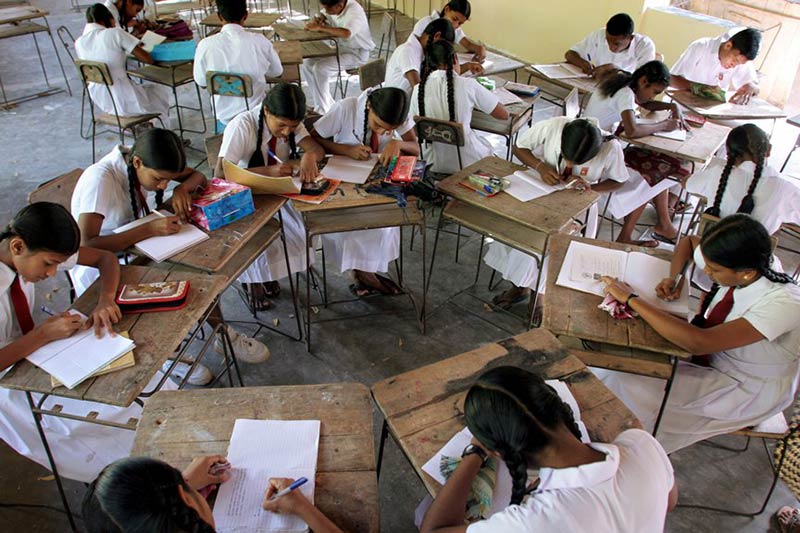
by Usvatte-aratchi
Two thoughtful short essays on schools and education appeared in The Island newspaper on January 20th and 21st. The first was written by Lokubandara Tillakaratne, and the second by Mahendran Thiruvarangan of the Department of Linguistics and English at the University of Jaffna. Both urged reforms in the systems in Sri Lanka. Thiruvarangan’s essay was more abstract and global in perspective. Tillekartane examined the structure of schools in Sri Lanka.
Thiruvarangan explicitly set out to examine the relationship between ‘school leavers and the job market’; he proceeded to observe this relationship from a global perspective; obiter dicta, he emphasized the value of ‘the humanities and social sciences’ in university education to enable, among other things, students to resist the hegemonies of global capitalism’. Neither of them had any numbers in their essays. Neither referred to the systematic empirical information on these subjects, which is widely available.
I will first deal with Tiruvaragan’s essay. He started with observations about ‘… the global south and its working classes (who) are pushed to experiencing extreme forms of vulnerability’. That assertion is worth examining in light of developments in the last 30 years or so, especially in this part of the world. We have seen a spectacular rise in living conditions of more than a billion in one short generation in China and India.
A generation before that, a large swath of people in Japan, Korea, Taiwan (China), and Malaysia emerged from poverty and are now among the affluent. Consequently, that part of Asia now contains the second (Japan), third (China) and fourth (India) leading economies in the world and contain about 45% of the world’s population. Indonesia may be hard by their heels. In Africa, Ivory Coast, Ethiopia, Rwanda and some others have done well during the last 30 years or so.
Those goals were all achieved by joining ‘the globalized labour force for the (mostly) private sector’. The lives of those who rose from poverty have been made less vulnerable as one can see in the changes in the consumption goods baskets of these people. They all have begun to consume more protein. Sri Lanka was a striking exception that failed to participate in that spate of rapid economic growth during the last 50 years and more. Our entrepreneurs failed to join the world supply chains in the burgeoning production of and trade in electronic goods. An infatuation with the imagined greatness of our past consumed government policies, forgetting that we live in the present and will live in the future; it is sheer vanity to search for lost time.
Thiruvarangan supports the claim for teaching and research in the humanities and the social sciences. This is a part of a larger debate spread among academics and others in most parts of the world. The relationship between universities and the economy and society was rapidly transformed in the latter half of the 19th century. From an institution that the church dominated, universities became partners in innovations in the economy and in the formation of economic and social policies. Germany led the way. In the words of the official historian of Cambridge University, it changed ‘… from a provincial seminary (in 1870) to … (a university) teaching disciplines almost past counting and of high international fame in many of them.’ There were five clusters of great inventions in the second half of the 19th century that transformed people’s lives, wherever, forever.
The first was electricity and the electric motor; the second, the internal combustion engine; the third., petroleum and natural gas and the production of plastics; (In early 20th century, Sir Wiiliam Hardy, who made important contributions in both chemistry and physics, advised young Joseph Needham that the future lay in ‘atoms and molecules, atoms and molecules, my boy’.); the fourth, in entertainment and communications and the last in running water, indoor plumbing and urban sanitation structures. These inventions which contributed to the marked continued rise in living standards worldwide (A few years ago, Prime Minister Modi announced to the General Assembly of the United Nations that his government had built 112 million toilets in his country) did not come from universities but were the output inspired skilled craftsmen.
During the period 1850 to 1900, teaching and research in natural and social sciences became common, in Germany, the US and the UK. In Cambridge, the Natural Sciences Tripos was established in 1851 and the Mechanical Tripos in 1894. The Economics Tripos examination was first held in 1905 with 10 students. Meanwhile, universities came into people’s lives more forcefully. Across the Atlantic, the Merrill Acts of 1862 and 1864 had started Land Grant Colleges in individual states. John Bascom, President of Wisconsin University, pledged, in1887, that (the university) would contribute to the work of social advancement by encouraging a more organic connection between its activities and community needs.
In 1892 Richard T. Ely (who founded the American Economic Review) started the School of Economics, Political Science and History making the university more of a ‘service station’ for the society it served. Way off in the North Pacific, the Imperial University of Japan was opened in Tokyo in 1887. Over the years, it has been a major institution in Japan’s economic and social development. These links between the university and the economy and society grew far closer, a hundred years later when universities became incubation chambers for new industries and enterprises. Universities began teaching politics (not simply the Plato-Aristotle variety) and government and business administration. As I remarked in the J. E. Jayasuriya Lecture in 2004, Sarasvati had met Lakshmi in universities. (This year, Professor Panduka Karunanayake of the Faculty of Medicine, Colombo will deliver the lecture on February 14 at the SLFI auditorium.)
That long harangue was to bring home the point that universities, industry, and society have drawn closely together because mathematics, natural sciences, economics, and social studies in universities have become integral to the working and development of modern societies. That connection is weak in those societies where the structure of the economy still does not need the services usually provided by universities to industry and services in rich countries. Once the need for school teachers is satisfied (as in Sri Lanka), the demand for university graduates in the humanities will fall and the demand for graduates in science and technology rise, when industries develop. Hence the voluble demand from School Development Officers to be appointed as teachers, in a situation where the student: teacher ratio is as low (good) as 18. Recently, the Arab countries (Arabia, Dubai, Qatar, Kuwait and Bahrain), flush with funds from the sale of plentiful petroleum at monopoly prices, opened some universities, all for science, technology and management. In general, universities have followed changes in economies and societies.
In as much as church and religion were integral parts of the lives of people in medieval societies, science and technology are integral parts of people’s lives in modern societies. One switches off a light and goes to bed at night and gets up to switch on a fan, to begin the day. The modern equivalents of liberal arts are mathematics and science. As economies and societies have changed, the demand for education in the traditional liberal arts has declined. One cannot live in the past.
Tillakaratne dealt with the structure of the school system in the country and found there ‘a neo-caste’ system. This is wholly misleading. I will not deal with ‘International Schools’ because they are neither international nor schools. They are business enterprises that sell educational services to local people with adequate purchasing power. Children of a few foreigners, temporarily resident in this country, also attend them. The students and teachers are overwhelmingly local, though they prepare students for examinations overseas. However, local schools in many countries prepare students for the International Baccalaureate (IB). In any case, I know little about them.
There are now 10,000 government schools in five categories depending upon the grades they teach and the subject areas they teach. The most numerous (7,200) are primary schools. 2,000 teach up to Grade 11 and the balance up to Grade 12 in the arts and/or science streams.
More than half of all schools enroll less than 200 pupils; 15% less than 50 and another 16% have less than 100. Of all schools, 400 are national schools, teaching 380,000 students. The student/teacher ratio is 15 students in Provincial Schools and 19 students in National Schools. The low student/teacher ratio in provincial schools is accounted for by the large number of small schools there. Nor is there a shortage of Graduate Trained teachers in them. There is a shortage of English, mathematics, science and technology teachers. There is a s shortage of competent English teachers overall. In an analysis of student’s performance in the GCE (O/L) examination, a few years ago, NIE showed that the proportion of students who received pass marks, and above, was 17 percent of all who sat for that paper. The real disadvantage that children in small schools suffer is that they have narrowly limited options. Small schools in their vicinity are necessary for small children to attend. It is economically infeasible to provide in small schools the multiplicity of options available in large schools. It is a hard nut to crack. Back in the 1940s, the solution was to open boarding schools in rural centres (e.g. Wanduramba, Matugama, Ibbagamuwa, Poramadulla). With the rapid growth in the school population that proved an unlikely solution. Poor transport facilities in rural areas make a feasible solution many years away.
With that rough sketch of the structure of schools, it is grossly misleading to label it as a ‘neo-caste’. A caste system, as we know, stratifies society. People belong in castes by ascription; they are born to it and there is no escape up; they can fall. When a Brahmin woman marries a Shudra man, their children are Shudra. That stratification lasts from generation to generation. In contrast, our school system consists of five steps, success at which paves for entry into the next higher. Does the term neo-caste take away the essential feature of a caste system? Tillakaratne’s contention that among schools there are differences of endowments is perfectly valid. Royal College, Colombo, is endowed differently from Royal College, Polonnaruva, or the Central School in Narammala. This is true of schools in all societies: in China, governed by the Communist Party, and in the US, governed by competing parties. In China, children of workers who migrate to cities must go to rural schools where their hukou is valid. More prosperous city dwellers are entitled to attend city schools superior to rural ones. This is true in the US, as well. Children of more educated and more wealthy parents live in culturally richer homes and, and no matter what school they attend, they outperform those from culturally poorer homes. Black children, who are the most culturally deprived population, perform worse than any other ethnic group in the US. Among us, so do families in plantations. When the two disadvantages combine, as often, when children from poor homes who go to poorly endowed schools, they suffer a disabling double whammy.
One of the major contributions educational policies made to this society is the rapid advancement of women. There are more girls than boys in government schools. More women than men go to university. More men opt to study engineering and related disciplines. That is a common feature in most societies, except in Eastern Europe (e.g. Hungary). In the civil service, there are more women than men. Women have occupied the highest seats of power in the country. This year, the Chief Justice of the Supreme Court and the Prime Minister are women- the head of the judiciary and the leader of the governing party in Parliament and of the Cabinet (primus inter pares); and those positions, they occupy, not as close relatives or acolytes of powerful men. The displacement from government in 2024 of a cautery of urban plutocrats some of whose principal sharpened talent was plundering the public purse (degree PPP) was the handiwork of a generation that had been educated in rural government schools. They are expected to change much in our society.
But for the education system chastised by Tillakaratne as a ‘neo-caste system’ millions of young men and women who during the last 75 years and more became university professors and vice-chancellors, civil servants, doctors, lawyers, school teachers and principals, businessmen and other professionals who otherwise would have been stuck in a genuine caste system. The education system is the alchemy that dissolved the rigidities of a caste system, that Tillakaratne mentioned. The education system is not responsible for the economic stagnation in this society which has limited opportunities for a burgeoning educated population.
Our school system has no features in common with a caste system. There are differences between the quality of schools in rich urban areas and poor rural areas. However, this is a feature in almost all societies. Those differences arise from large inequalities and inequities in the wide society which affect both the quality of schools and the culture in households. It is when access to education and wealth are closed to certain groups that an education system takes on the nature of a caste system. The school system in this country during the last 75 years has been a wide ladder on which, millions climbed onto a platform that remained too narrow to accommodate them. Those crowded out jumped onto platforms overseas.
Features
Crash of HS 125 G- BCUX at Dunsfold and obstacles at runway end
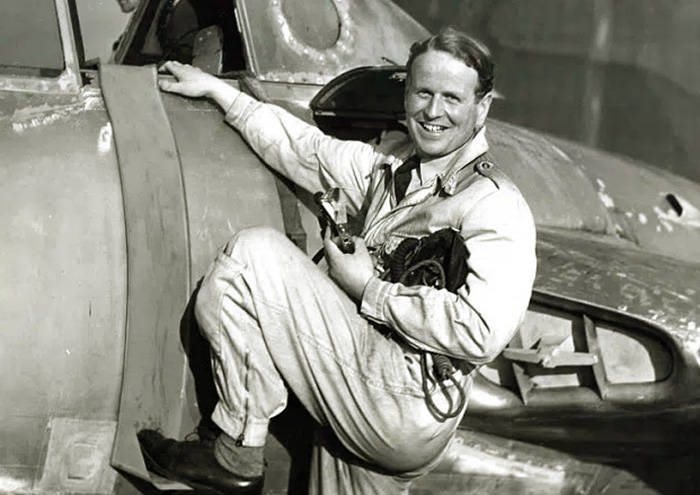
by Capt. G A Fernando
gafplane@sltnet.lk
Former President, Aircraft Owners and Operators Association, Sri Lanka
The HS 125 was designed and built in 1962 as the de Havilland 125 (DH 125) and later by the Hawker Siddeley Company (the same company that built the Avro HS 748 and the HS 121 Trident). It was meant as a replacement for the now aging de Havilland 104, Dove which was an eight-seat twin piston engine ‘feeder’ aircraft.
HS 125- 600B was powered by two small Rolls Royce Viper 601 jet engines, mounted in the rear and capable of much higher altitudes and speeds than the DH Dove aircraft. These were the times of the emergence of light business (executive) jets. The advantage being that the passengers were not governed by Commercial jet flight schedules and were able to jet themselves to International airports, big and small, and have board meetings in the air, while on the move. Engines at the rear gave a much quieter, First Class ride to all the passengers. It had a range of over 1700 miles.
The HS125 Registered G-BCUX was just one year old and was carrying out a demonstration flight from Dunsfold airport, (Surrey), which was built by the Canadian Army and contractors during WWII and was occupied by the Royal Canadian Air Force, (RCAF) operating under the control of the RAF, from 1940 to 1944. It was then acquired after the war by the Hawker Siddeley Company. As a matter of interest, after 2002 the airfield was used for the BBCTV programme, ‘Top Gear’.
On that fateful day, in November 1975, at the controls was Capt. John ‘Cat’s Eyes’ Cunningham CBE DSO DFC AE DL FRAeS, a very experienced pilot who had test flown the DH Mosquito prototype during the war and later Chief Test Pilot for the DH Comet project and the HS 121 Trident programme. The Comet was the first Jet passenger airliner in the world. He was known as ‘Cat’s Eyes’ during WWII, for shooting down 20 German aircraft in the night, using Radar equipment, fixed in his aircraft. When asked by a reporter as to what the secret of his uncanny success was, he couldn’t speak about the ‘top secret’ airborne equipment but attributed it to his good night vision resulting from eating carrots. This is not being totally unscientific, with carrots containing Vitamin A! When Air Ceylon acquired a HS 121 Trident aircraft, in 1969, Capt. Cunningham was in Colombo on a pilot training assignment. Most of Air Ceylon’s original Trident pilots were trained by him in 1969.
The HS 125 had a total of nine persons on board (two pilots and seven passengers). To all intents and purposes, it was expected to be a ’milk run’. On take-off, Capt. Cunningham had the landing lights on, as it was the standard operating procedure (SOP) to scare away the birds. He hadn’t observed any birds, at this moment of time, though. Just as he and his co-pilot started take-off, a Harrier Jet aircraft which was a noisy VTOL (Vertical Take-Off and Landing) aircraft was coming in to land. This disturbed two blarge flocks of Lapwings, not visible in the freshly mown grass, between the runways, and the disturbed birds got airborne. (The birds prefer short grass to long grass.) The aircraft also got airborne, just before the halfway mark of the runway. When the aircraft was between 50ft and 100ft, observers on ground saw the birds hit the aircraft. Some were ingested by the engines as there was a trail of fire from the engines. They saw some birds falling from the sky. The pilots, too, heard the noise of impact, felt the aircraft decelerating and experienced a drop in engine power. Capt. Cunningham moved the throttles forward to full power and the engines didn’t respond. He had no time to troubleshoot. Therefore, he decided to force land the aircraft straight ahead by throttling back, ensuring that the undercarriage (wheels) were down, selecting full flaps and pushing the nose down.
The aircraft touched down on its main wheels, 180 metres from the Runway end, at about 120 Knots (138 mph). The captain started heavy braking as soon as the nose wheel touched the ground. Unfortunately, they couldn’t stop and overran on to the wet grass and a few small hedges and hit a ditch at 285-metre from the runway. This sheared off the three wheels which were providing the braking action and now the aircraft, bounced and slid on its belly, through a larger and thicker hedge bordering the a main road at about 85 knots (98 mph), smashed into a Ford Cortina full of children and stopped 150 metres beyond the road. The fuel tanks were ruptured by some concrete posts by the road side and the car and the aircraft caught fire. Although the Captain hurt his back, all the occupants were able to evacuate safely. There was no Flight Data Recorder fitted and therefore the speeds were estimated.
The official accident investigation was conducted by W D Westlake, Inspector of Accidents, Department Trade, Accident Investigation Board (AIB), UK. The findings were that the Captain’s decision to land straight ahead was correct. Other observations were that there were no major obstacles visible ahead, in the runway overrun area. The deep ditch that the aircraft fell into and the concrete posts by the road, could not be seen. The impact with the Ford Cortina, under the circumstances, was beyond the control of those concerned. The aircraft at the time of impact, had lost its braking devices in the wheels and was sliding on its belly. The investigation also acknowledged that airports have been designed primarily with the safety of aircraft in mind. However measures could have been taken to safeguard the safety of the general public, where main roads run at the end of the runway, by the use of traffic lights, controlled by the Control Tower, to prevent traffic crossing the extended centre line of the runway especially, when twin executive jets with small jet engines are taking off as statistically the chances of a double engine failure were greater.
The Ford Cortina was driven by a wife of another pilot, who was driving five children home from school. The investigator declared that she may have been caught by surprise when the aircraft burst through the hedge. The report also mentions that although the aircraft was sliding on the ground uncontrollably, if the hedge by the road not been there, the runway overrun area would have been clearly visible to the driver and that she may have not been taken by surprise and probably able to brake and stop her vehicle or take evasive action and saved the day.
The theory is that when two moving objects observe each other, closing in, if the relative bearing is the same for the next few seconds then the chances are good that the two objects will collide (meet at a point). If the relative bearing changes they will miss each other. Human mind does it automatically.
There are many airports in the world that have main roads passing by their perimeter. Almost all of them have a fence where the travellers on the road can observe movement of aircraft at the runway end.
During the Eelam war, the Sri Lanka Air Force built a concrete wall at Ratmalana to prevent undesirables from looking in. It is over seven feet tall in some places. (Picture 01). Now that the war is over, there is no need for the wall, which could lead to an unfortunate situation, similar to the one where where an Indian Airlines Airbus A 320 undershot the runway and hit the perimeter wall of the Bangalore (India) Airport and was destroyed and all on board were killed. (See picture).
As far back as five years ago, this was pointed out to the authorities by the writer. A little under two years ago at a Safety Seminar conducted by the Civil Aviation Authority, 24 of the most experienced Light Aircraft Pilots, Airline Pilots, Flight Instructors and Designated Flight Inspectors of the land, wrote to the then Director General of the Civil Aviation Authority of Sri Lanka (DG CAASL), that the Ratmalana concrete wall was an accident waiting to happen and that the situation was totally unsatisfactory and not in keeping with good aviation practices recommended by both the IATA (International Air Transport Association) and ICAO (International Civil Aviation Organisation). What is recommended is a fence where both sides can be seen. Research has shown that there are fences strong enough to snag an aircraft without creating an impact that could destroy the aircraft and kill all passengers.
Statistics suggest that somewhere in the world, there is at least one runway excursion (overrun) by an aircraft every month. The Aviation Industry has to learn lessons from the accidents of the past. The G-BCUX accident shows that accidents could happen to the most respected, experienced and capable pilots. For some unknown reason the ‘Authorities’ in Sri Lanka have not been ‘proactive, predictive and preventive’ as recommended by ICAO.
Features
The Ceylon Journal, Vol. 1 No. 2:A remarkable production
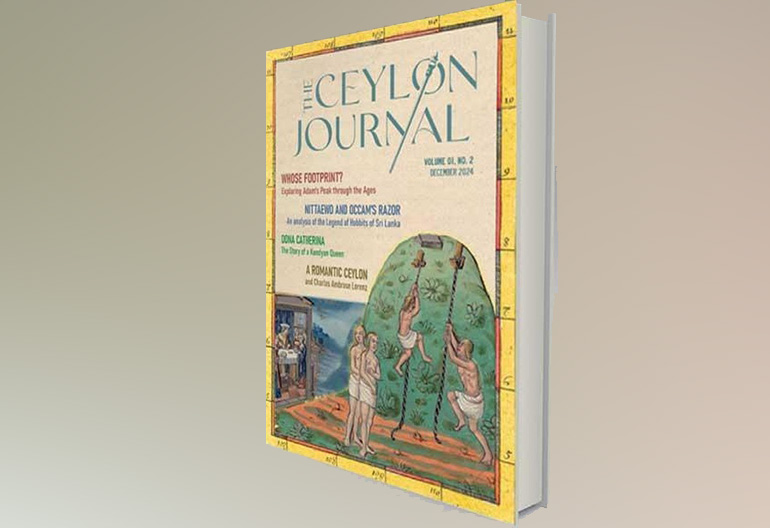
Reivew by Prof. Rajiva Wijesinha
Edited by Avisha Mario Seneviratne
When over forty years ago I produced the first volume of the New Lankan Review, which proved popular if controversial, I realised that the real test would be producing a sequel. That was managed after a year, and I continued publication over eight volumes, stopping with a memorial volume for Richard de Zoysa after his death, for by then I had got Channels going, the journal of the English Writers Cooperative. That had more limited scope, for it was about creative writing, whereas NLR had had social criticism too. But by 1990, I felt it was time to move on to other things, and began my intensive work with regard to English Language Teaching.
This preamble is because I have to express my congratulations to Avishka Mario Seneviratne for having so swiftly produced a second number of his Ceylon Journal, ably fulfilling his commitment to make it a bi-annual publication. And once again he has amply justified his commitment to expanding understanding of ‘the very many facets of the history of Sri Lanka’
A couple of writers feature again after their fascinating contributions to the first number. But they deal here with very different subjects, the distinguished historian C. R. de Silva moving from a study of Galle to an account of Dona Catherina, whom the Portuguese hoped would be a puppet sovereign of Kandy, but who instead provided legitimacy to Vimaladharmasuriya, who wrenched the kingdom from Portuguese control.
Avishka himself, having written previously about the enigmatic Ronald Raven Hart, moves to the inspiration for the Journal, Charles Ambrose Lorenz, and has a fascinating account of his work and the contemporaries who helped him along. The glimpses of giants of the last century, such as Christoper Elliott and Richard Morgan, and the Britishers who ran the place including the intellectual Emerson Tennent who sadly supported the excesses of Viscount Torrington during the 1848 rebellion, are richly evocative of those distant days. And happily Avishka illustrates the article with reproductions of Lorenz’s caricatures of his contemporaries.
The volume is dedicated to Fr. S. G. Perera, whose history textbook was a staple in schools for many years. There is a rich account of how he filled the gap when there was no material for the study of local history, even though one of the more enlightened British governors noted the need for schools to take this up. And that article is followed by a helpful bibliography of Fr. Perera’s publications, which include interestingly ‘A Priest’s Letters to a Niece on Love, Courtship and Marriage’.
There are two interesting excursions into the byways of our history. Manohara de Silva, who had written in the previous number, now deals with the ambiguities in the different versions of the 1815 convention, and notes how the British won round the Buddhist clergy by a different version in Sinhala about the primacy of not just Buddhism but the Buddha Sasana, which would include the Sangha. Very different is the account of the Nittaewa, in which Pradeep Jayatunga, looks at two very different early accounts, and concludes that evidence of a human dimension has been crowded out by stress on bestial characteristics.
Fascinating was the account of a now almost forgotten politician, Wijayananda Dahanayake, who was briefly Prime Minister. This was almost by accident since the most senior member of the cabinet, C P de Silva, was away when Bandaranaike was assassinated and Dahanayake had been acting. He had a glorious time, sacking the ministers who had contributed to his elevation, and then setting up a political party which won no seats at all in the election that followed. But he was back in the July election, and then became a Minister in the UNP government of 1965, though he left that party soon after its defeat in 1970.
But he was back again, not in 1977, when he lost as an independent, but shortly thereafter when he had got the victorious candidate for Galle unseated through an election petition which he argued himself. And having then come in as a UNP candidate in the by-election, he was briefly made a Minister by J R Jayewardene, before that long parliament was finally dissolved in 1988.
As with most of the articles in the Journal, the meat of the account of Dahanayake is not in the record of his life in parliament but rather in the personal touches. Some of the anecdotes are well known, such as his donning of a loincloth to protest against state restrictions on dress material, but even more telling is his producing in parliament the jacket of a hospital attendant and telling the Speaker, a renowned philanderer, that he was sure he was quite familiar with this. And perhaps most characteristic of the man was his reply when asked why he travelled in third class in trains, when parliamentarians were given first class tickets, that it was because there was no fourth class.
I have dwelt at length on Dahanayake because I have a soft spot for him. Embedded in my memory is a journey in his car from Kandy when he gave me a lift, after we had both been staying with the Government Agent W J Fernando, and he enriched the journey with a disquisition of the joys of English literature. He was immensely erudite, and the article captures that as well as his entertaining quixoticism.
Then there are two pieces about interesting visitors to this country in the first couple of decades after independence. Malaka Talwatte writes about Taprobane Island, which was rented for many years by the American writer Paul Bowles. Amongst his guests was Peggy Guggenheim, and the article expands on her contribution to enhancing the appreciation of modern art. When I was very young I read about this dimension of the contribution of that extraordinary family to the display of art, but I did not know before that she had spent some time in this country.
The second about visitors is related to this, in that it deals with Donald Friend, who spent several years with Bevis Bawa at Brief. The latter took Friend on a visit to Taprobane Island when Bowles was there, and wrote about the problems Bowles had with the locals. That was the main reason he left the place.
The writer of ‘Friends of Friend’, Srilal Perera, is not described in the note with which the volume begins, giving details of the writers. I have no idea then of his background, but he must be congratulated for a rich account of not only artists such as the architect Ulrik Plesner, but also the controversial planter Mark Bracegirdle whom a Governor had tried to deport in the thirties. The connection is tenuous, for Friend lived in Ceylon in the fifties, but a biographer noted that he moved in the same circles as Bracegirdle in London after he had left Ceylon.
Another cultural activist who did much for the country is commemorated in an article by Michael Meyler, who is described as a language teacher, writer and editor. He writes about Richard Boyle, who died in 2023. Having come out first to Sri Lanka in 1973 to work on the not very successful film ‘The God King’ with Lester James Peries, he was so taken with the country that he was involved in two more films here during the next few years, including with the redoubtable Manik Sandrasagara.
Meyler is most entertaining about the various projects Manik devised which Richard tried to support, but more fulfillingly he met here his future wife Sharmini Chanmugam, and they set up their own video production company. Their work was much appreciated, and they were commissioned to create memorable accounts of the country, though Richard also worked on a series of books which explored elements of our languages and interesting personalities.
I have written at some length about many articles in the second Ceylon Journal, and still not mentioned the keynote piece which records many depictions of Adam’s Peak through the ages, in literature and through sketches. The article, by Donald Stadtner, an American academic, has fabulous illustrations from a 15th century manuscript now in Paris, about which I had known nothing previously. It deserves to be better known, and the writer and the editor must be congratulated for giving it a wider audience.
In addition to the many articles, the journal has a note about the launch of the first number last August, and reproduces the text of the thought-provoking keynote address made by Rohan Pethiyagoda. In tracing the history of rubber cultivation, he touches on social and economic changes which rubber supported, and regrets what he sees as a mindless reaction to colonialism so that ‘We rejected the good values of the West along with the bad: like courtesy, queueing and the idea that corruption is wrong’.
The journal is a remarkable production and, since the second lived up to the first, I am sure the third will appear soon and continue with similar excellence.
-

 News3 days ago
News3 days agoMusk reveals ‘crazy waste’ of USAID funds in Sri Lanka
-
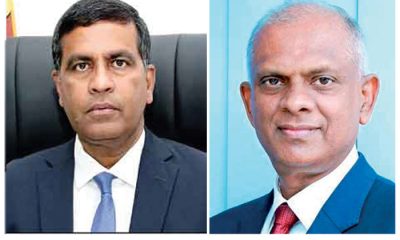
 News6 days ago
News6 days agoCID questions top official over releasing of 323 containers
-
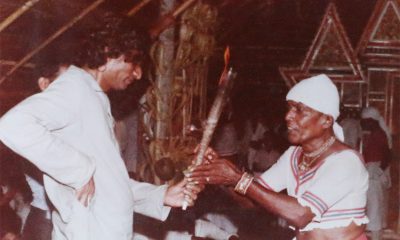
 Opinion6 days ago
Opinion6 days agoA singular modern Lankan mentor – Part III
-

 News6 days ago
News6 days agoHarry and Ken pass away
-

 Features6 days ago
Features6 days agoThe President’s Jaffna visit and its implications
-

 Midweek Review5 days ago
Midweek Review5 days agoCanada plays politics with Sri Lanka again ahead of its national election
-

 News5 days ago
News5 days ago‘GovPay’, first step to digitalise government services
-
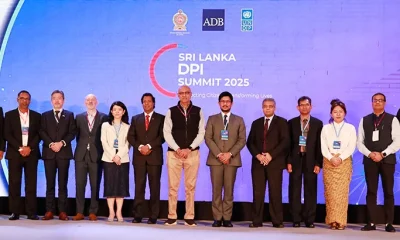
 Business4 days ago
Business4 days agoUNDP, ADB pledge support to SL on its public digital journey at key summit

